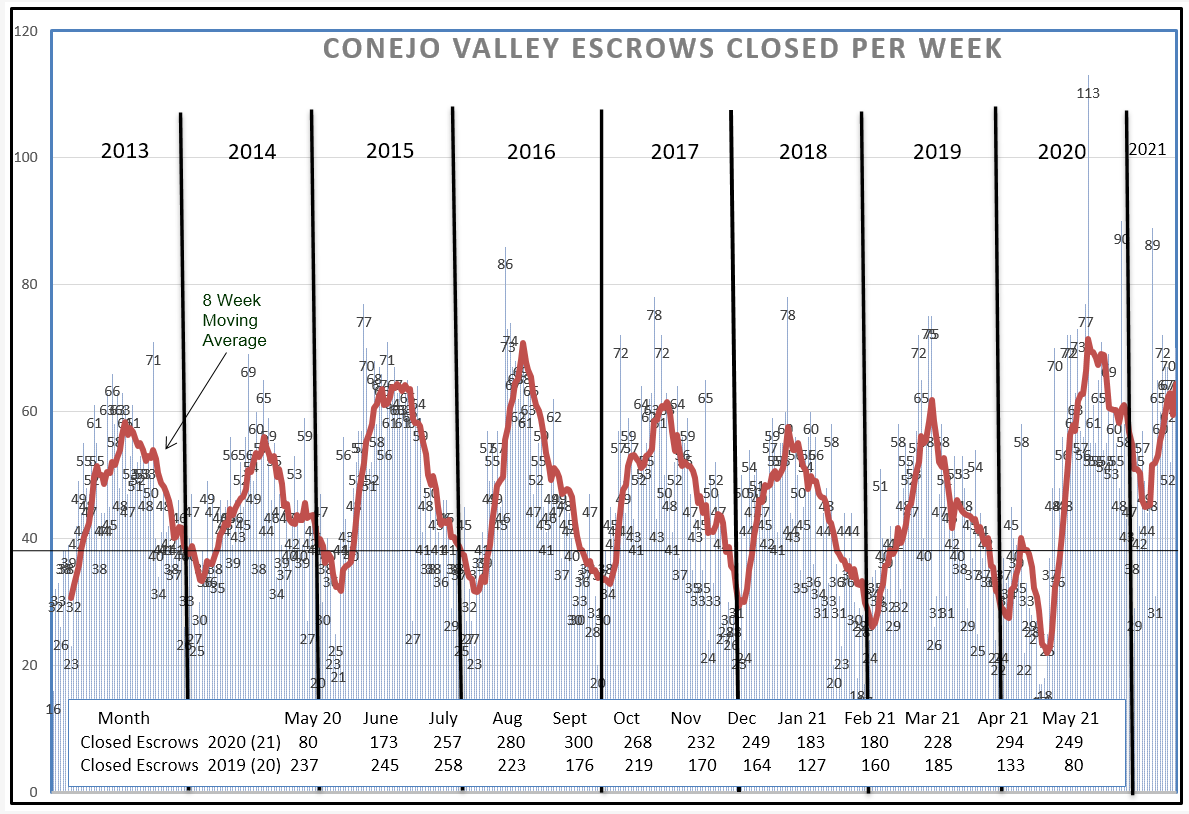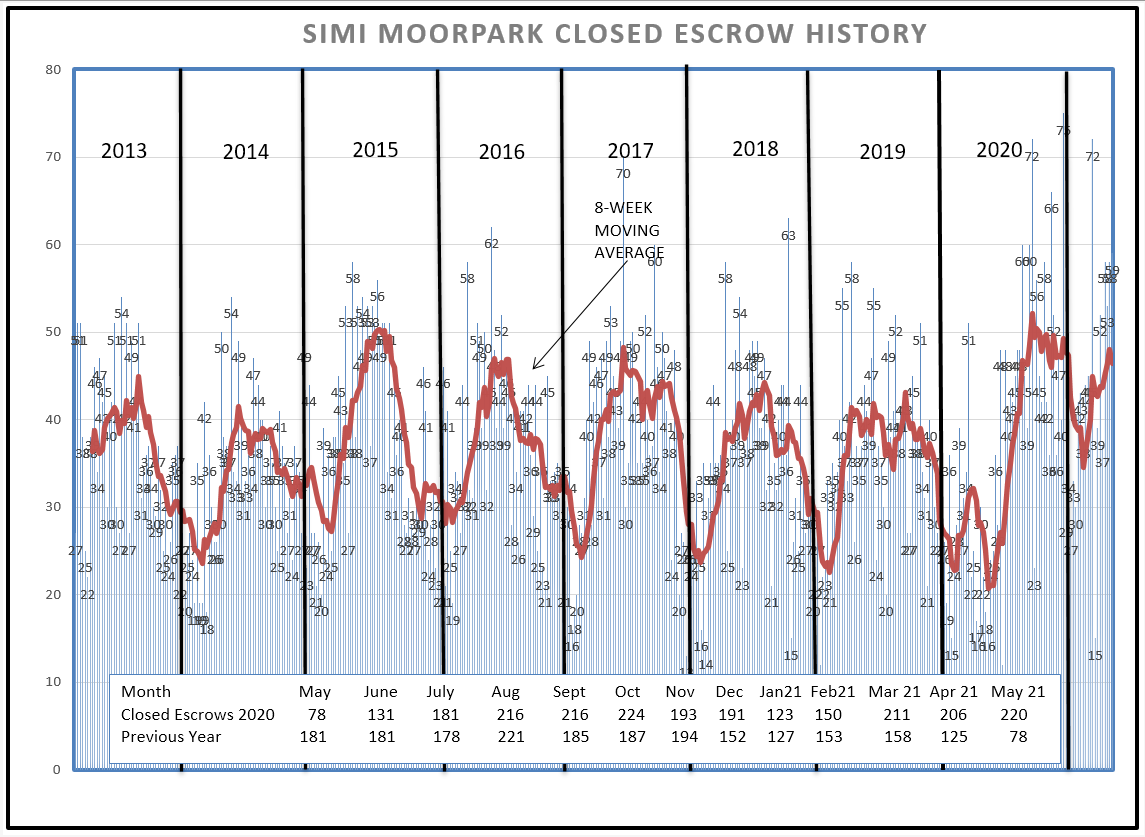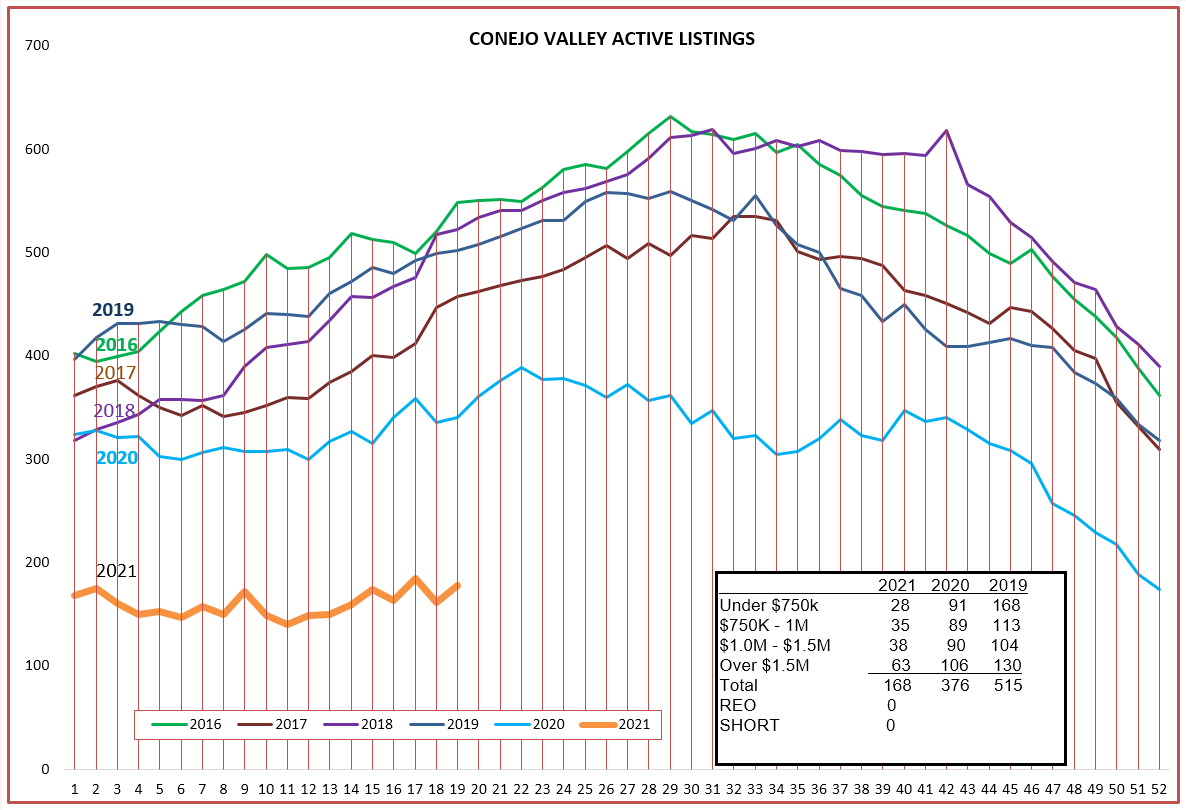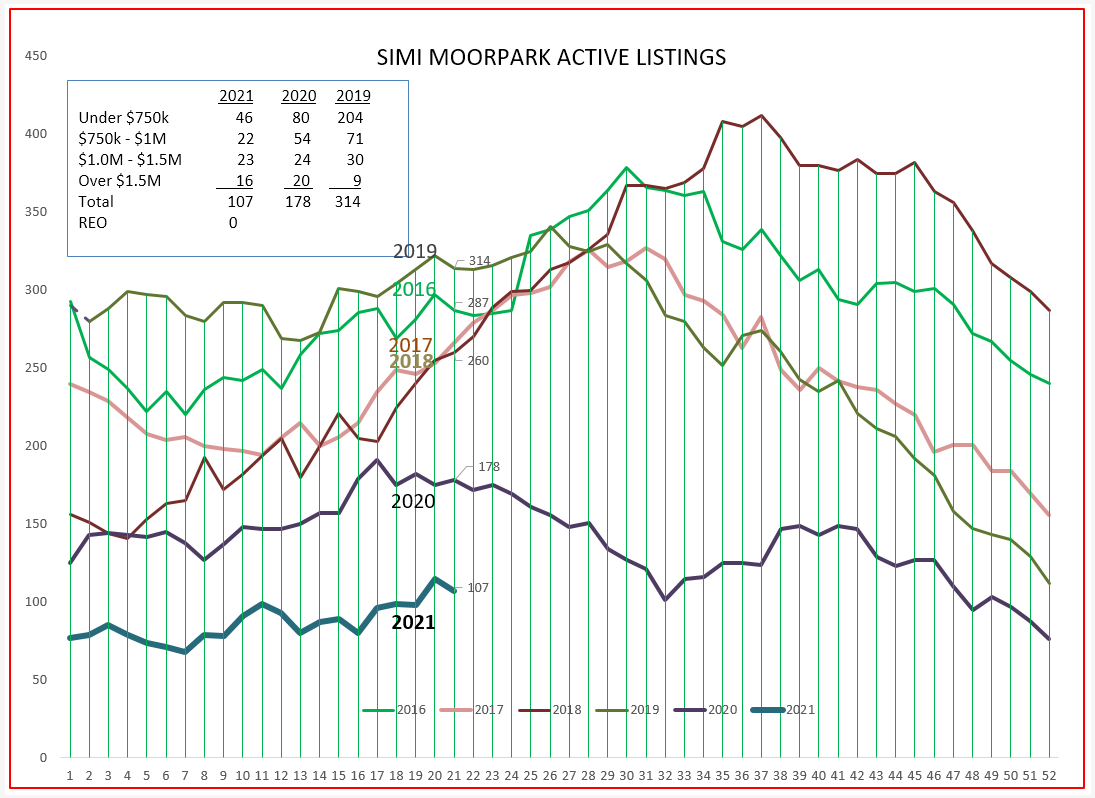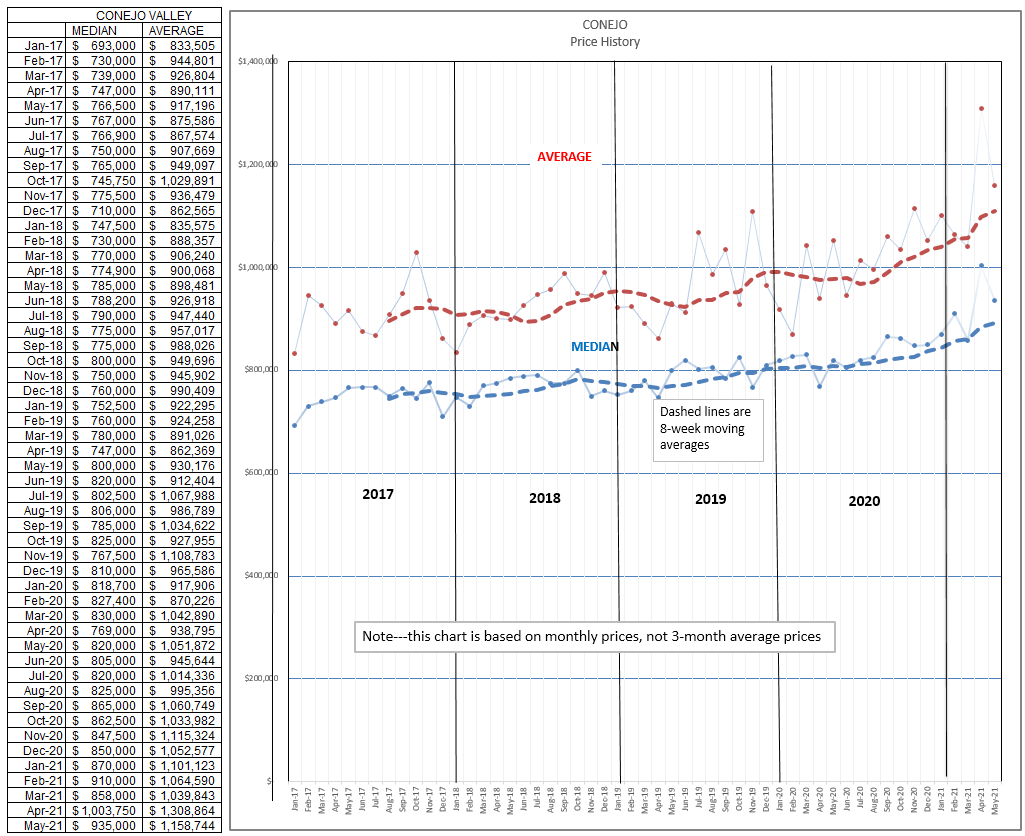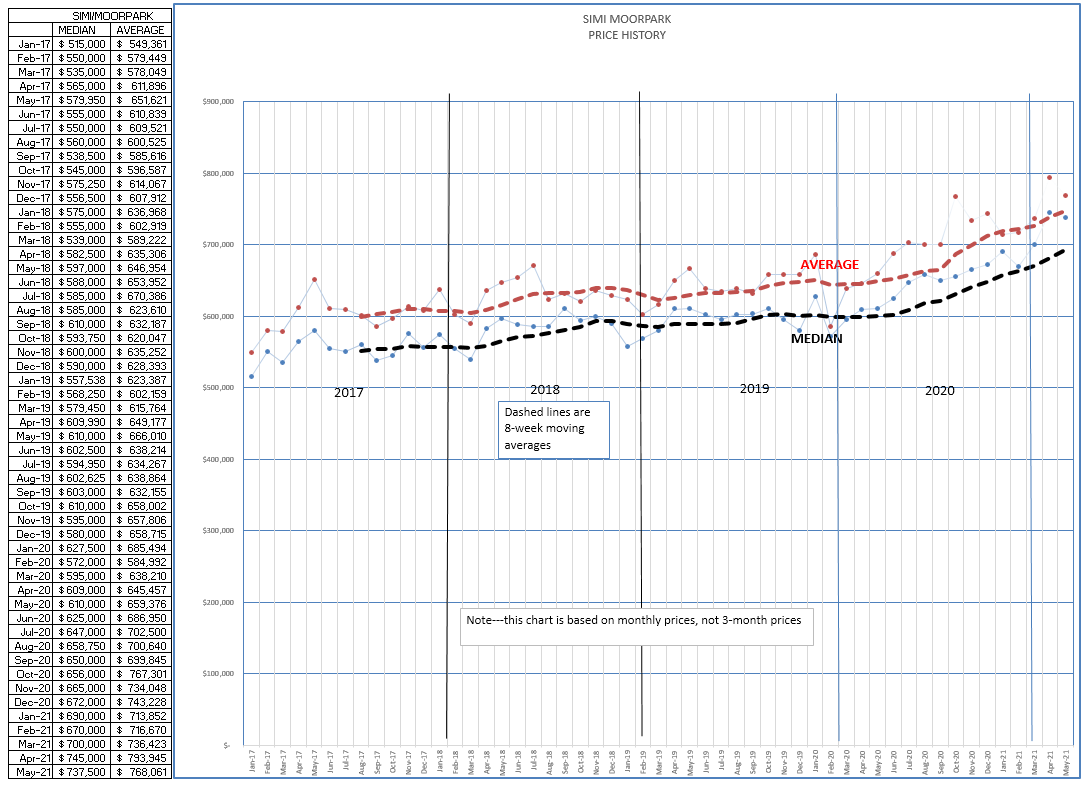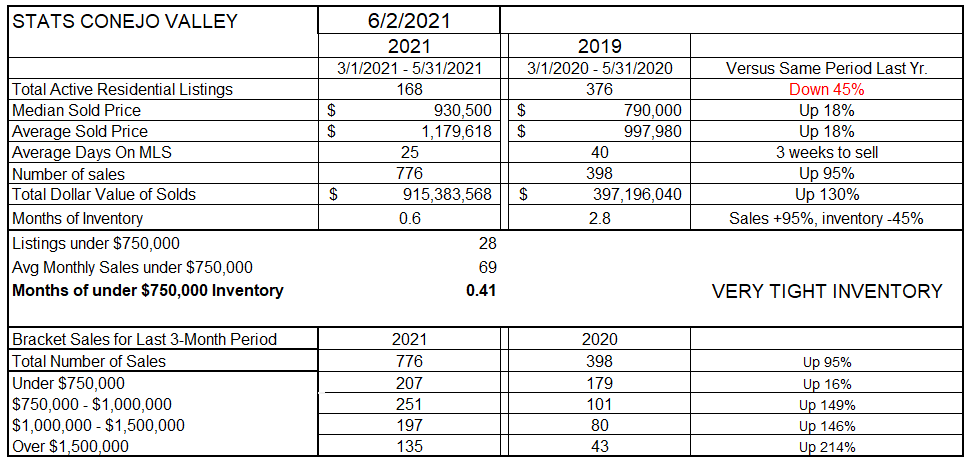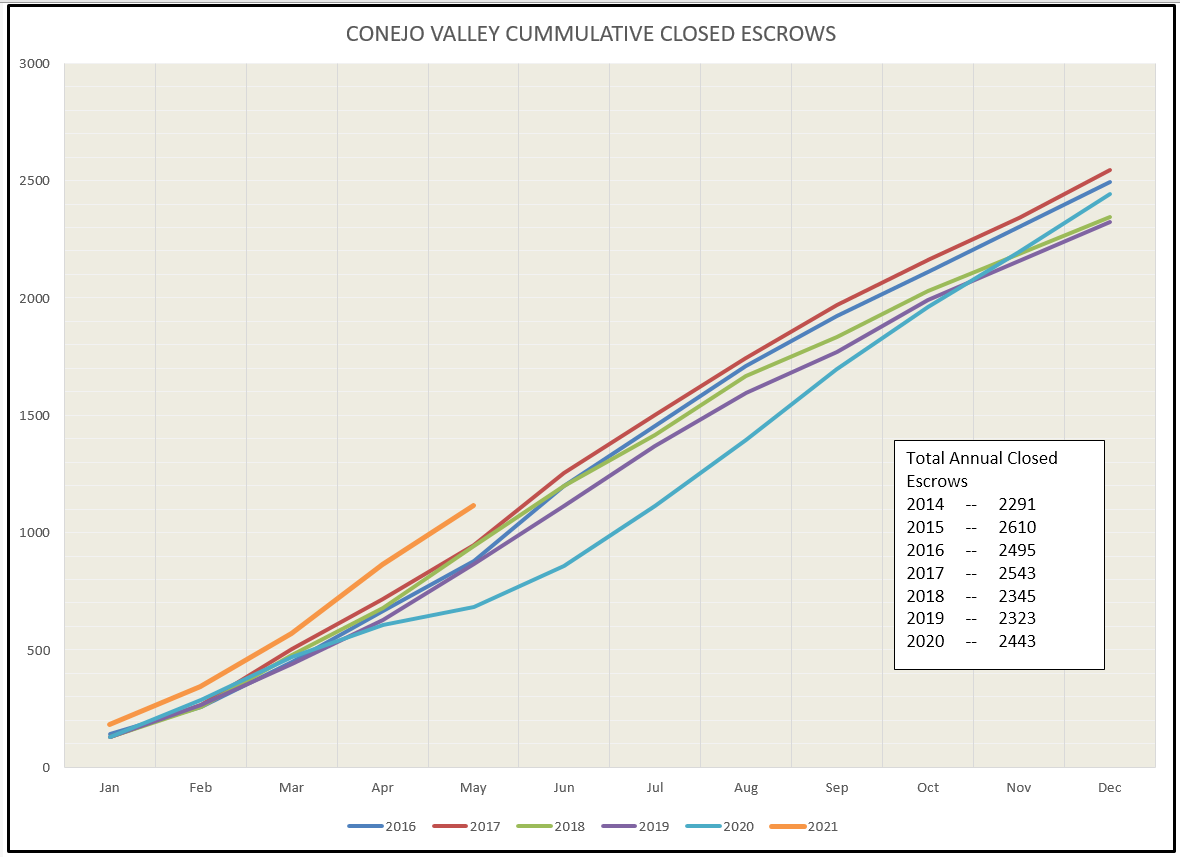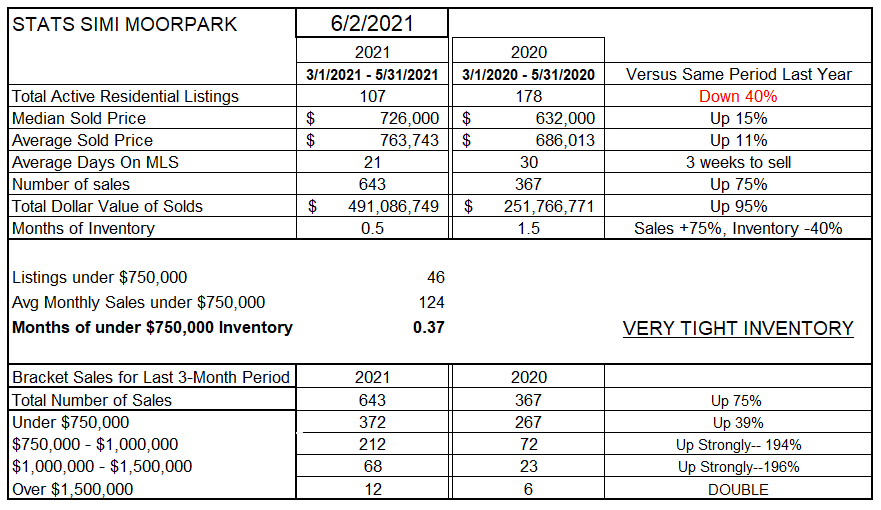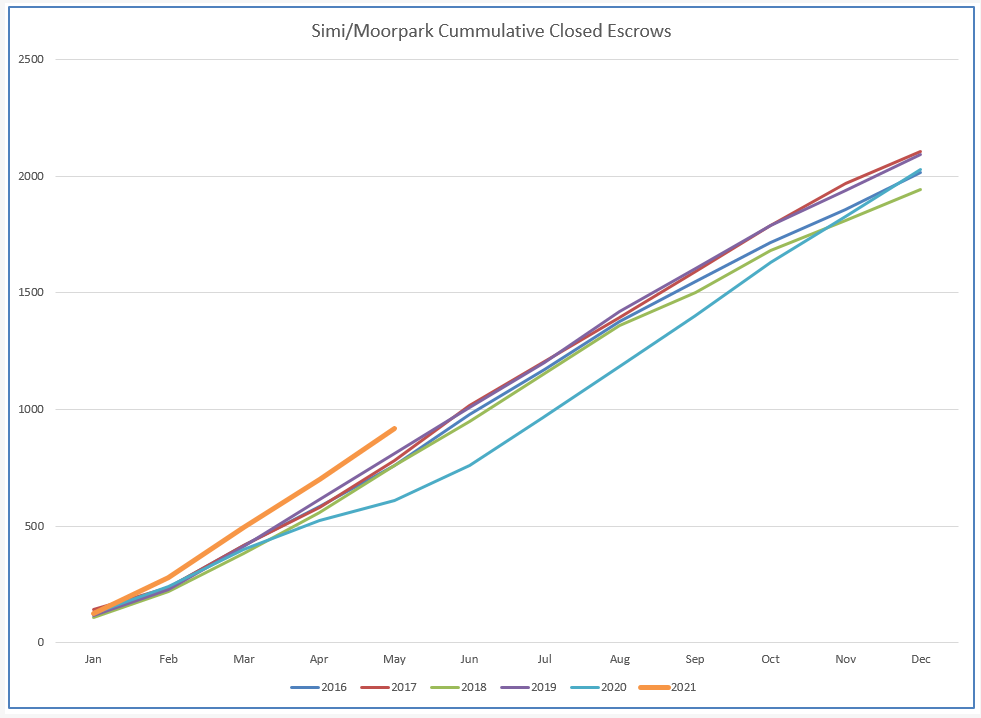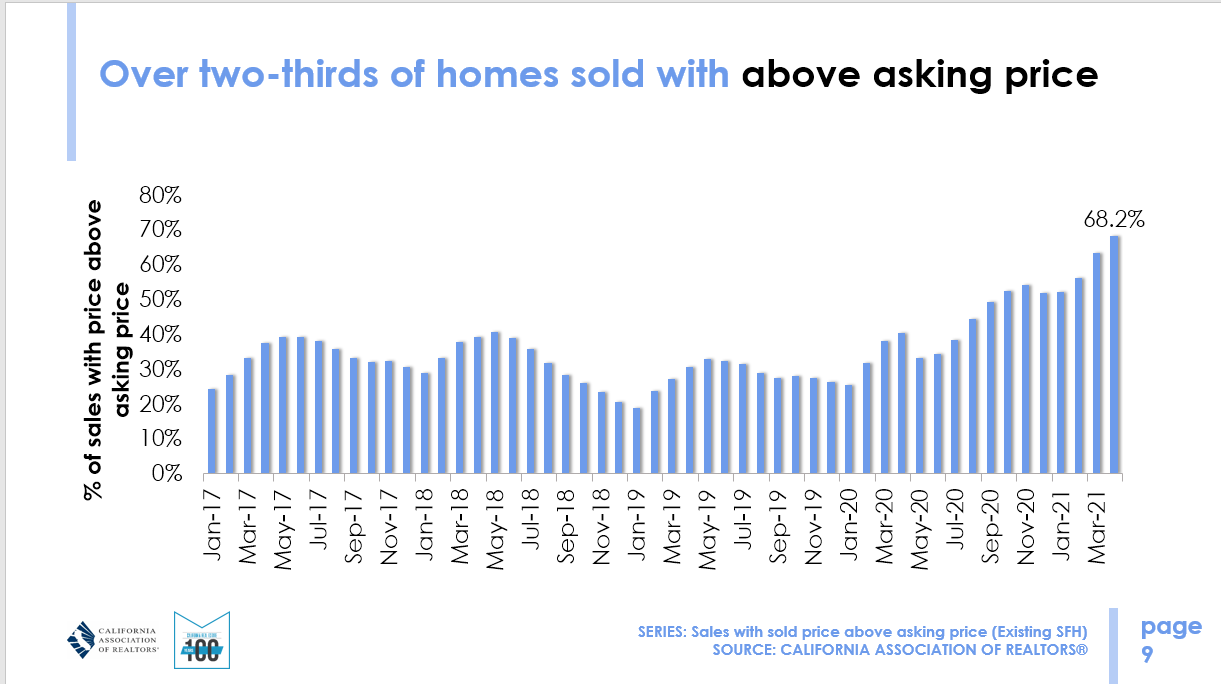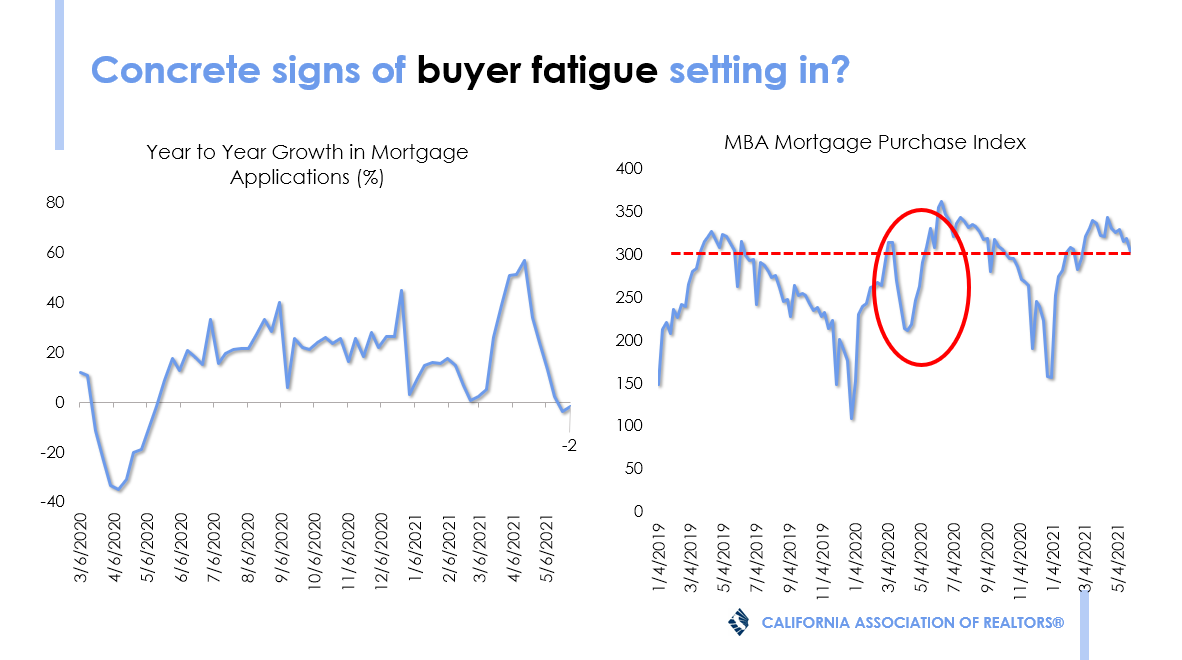Sacramento has declared we are officially a couple of weeks away from normal. California opens up on June 15th. It will not exactly be normal, masks will still be required for planes and perhaps some stores. It has been quite a time.
I want to start with the chart of closed escrows, because the inset box shows the number of monthly escrows closed over the past 12 months. Let’s keep in mind the timing of how things shut down. The country began shutting down mid-March 2020. SInce escrows take about 45 days to close, the impact of a slowdown in mid-March was seen in May closings. As the panic of the pandemic set in, everything stopped, including real estate sales. May 2020 resulted in only 80 homes closing escrow, a record low for the past decade.
As 2020 progressed, certain businesses were hit harder than others. (Vacation, airline travel, restaurants, hotels, cruise lines—all termed hospitality). Hospitality businesses were the first to shut down and are the last ones to re-emerge. Hospitality also represents some of the lowest paying jobs. If we had run a survey in the spring of 2020, most would have said that the future of the market looked very gloomy.
But not all businesses were hard hit. Many businesses surprisingly continued to operate, although remotely. Mainly these were service businesses. and we became experienced at working from home. A new word, Zoom, appeared in everyone’s vocabulary. Many of these service jobs were in high-pay categories, those higher paying categories that allow earners to purchase homes. Although real estate was very difficult to show, as open houses disappeared, we became skilled at utilizing better pictures and videos to market homes virtually. Due to the reduction in driving to work (2-3 hours a day versus a walk over to the computer) homes became more attractive, as places to work in addition to places to live. Homes in suburbs (that would be us) became more attractive than homes in the central city.
The housing market took off, and we experienced the strongest market demand in recent history. The end-of-year holidays generally result in a dip in closed escrows in February. For 2021 the dip did occur, but not much of a dip, and February recorded only three weeks with escrows lower than 40, remarkably strong sales.
For Simi-Moorpark, the story was the same. The second dip in 2020, the April-May covid dip, was followed by extremely high sales, limited only by the lack of inventory available for sale. In 2021, the February dip was hardly noticed, followed by continuing strength in sales.
Strong demand met extremely low inventories head on. Historically low inventories. Only half the inventory available in 2020, and only a third of the 2019 inventory. The 2021 inventory graph never achieved the usual summer growth, and has basically flat-lined. There is a lid on the inventory. When we cook, we put lids onto a pot to prevent it from boiling over, keeping the heat in. In our market, the temperature of price increases began to boil.
Simi Valley and Moorpark median prices are roughly $200,000 lower than the Conejo Valley. When it comes to affordability, more buyers can afford homes in SImi/Moorpark versus in Conejo. In 2020, their inventory never experienced the usual summer growth. In 2021, the inventory situation turned dire. Similar to Conejo, inventory is half of 2020, and a third of the inventory in 2019.
Prices have been steadily rising, double-digit rising. Median prices at the outset of 2020 were around $800,000, rising 17 months later to close to $1 million.
For Simi/Moorpark, the beginning of 2020 saw Median prices of $600,.000, and now have risen to $740,000.
Those numbers can best be compared in the Statistics table, which uses a 3-month average to smooth out monthly leaps and dips. The current inventory of homes represents only about three weeks worth of current sales. Due to an inventory 45% lower than 2020, and very strong demand, both Median and Average prices rose 18% in one year.
When we look at the comparison of number of sales closed, we have to recall that May 2020 was the low point in activity last year. Sales nearly doubled year-to-year, but remember that last May closings were destroyed due to the beginning of the pandemic. May 2021 was the low point for sales in our market.
To compare how 2021 compares to other years, particularly 2020, we will refer to the chart that records total monthly sales that accumulate as the year progresses. This cumulative sales chart shows the dip that occured in April-May 2020, and the recovery that took place as the year progressed. It also shows the abnormal strength in closed escrows as 2021 is progressing. But the growth in sales is now what we normally experience, no longer rising strongly.
For Simi/Moorpark, much the same is occurring.
The Statistics table uses a 3-month average to smooth out monthly leaps and dips. The current inventory of homes represents about two weeks worth of current sales. With an inventory 40% lower than the already-low 2020, Median prices rose 15% in one year, and Average prices rose 11%.
When we look at the comparison of number of sales, we have to remember that May 2020 was the low point in activity for 2020. Sales nearly doubled year-to-year, but remember that last year were the beginning months of the pandemic, resulting in an abnormally low figure.
To compare how 2021 compares to other years, particularly 2020, we refer to the chart that records total monthly sales that accumulate as the year progresses. This chart shows the dip that occured in April-May 2020, and the recovery that took place as the year progressed. It also shows the abnormal strength in closed escrows as 2021 is progressing.
Everyone knows homes are currently selling with multiple offers, over list price. But how much over list price? The following chart is borrowed from Jordan Levine, chief C.A.R. economist .
So is there anything stopping this roller coaster?
Again, from Jordan Levine, reporting statistics from the mortgage banking industry:
When homes go into escrow, mortgage applications are immediately filled out, and escrows close 45 days later. A dip in mortgage applications is a precursor to a dip in closed escrows. In his chart above, the red circle represents the second dip in sales for 2020, the first dip being the usual end-of-year slowdown due to the end-of-year holidays.
This does not foretell the breaking of any bubble. We have a very strong market, not a bubble. Millennials are finally buying, some with money from parents and grandparents. But we call them markets because they move up and down, and are guided by the laws of supply and demand, If prices rise too rapidly, there are consequences. In our case I see two. One, sales will slow down. We have some space for them to slow down to a normal pace. Second, given the demand for housing, providing more housing will become attractive. We may go through some periods of lumber shortages and lengthy delivery times for appliances, but that will sort itself out. Sacramento has made it clear there has to be more housing, new construction as well as conversion of commercial and office space to residential. This is all part of a process, and the stars are aligning. Covid provided the alignment to take place faster than expected.
That’s what I think. What are our thoughts? I would be very interested to hear.
chuck.lech@gmail.com
Have a safe and sane return to normalcy.
Chuck
